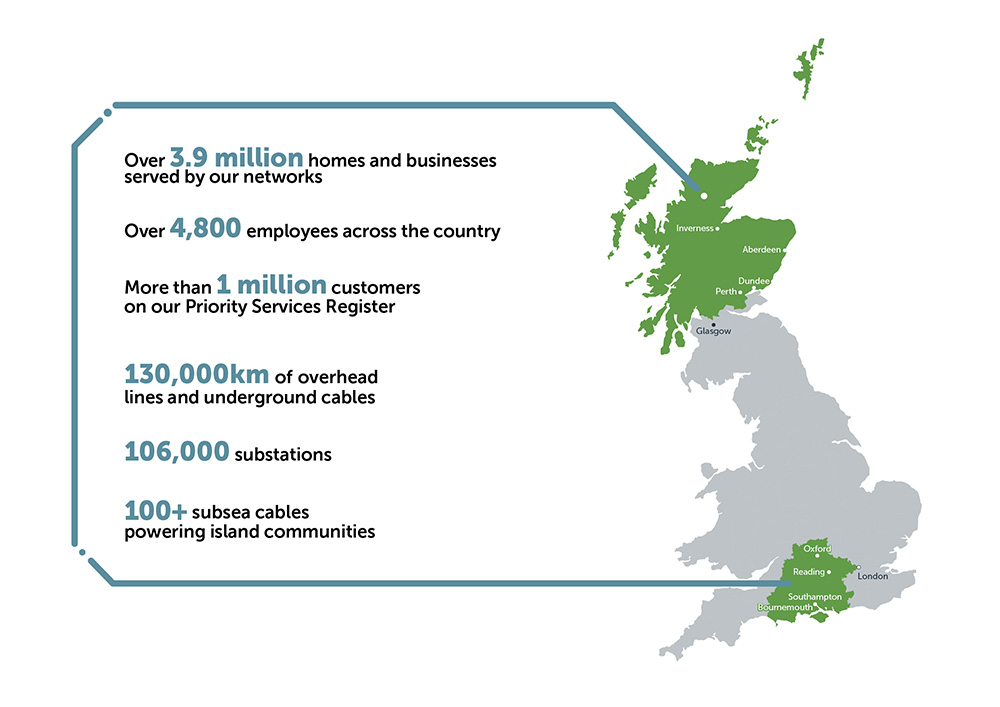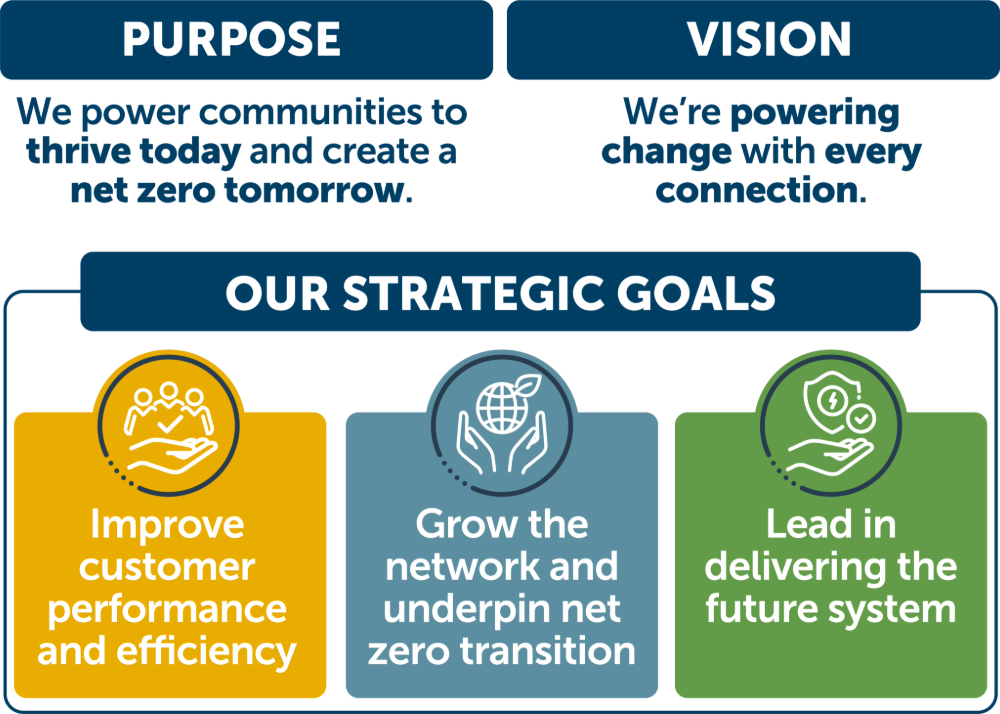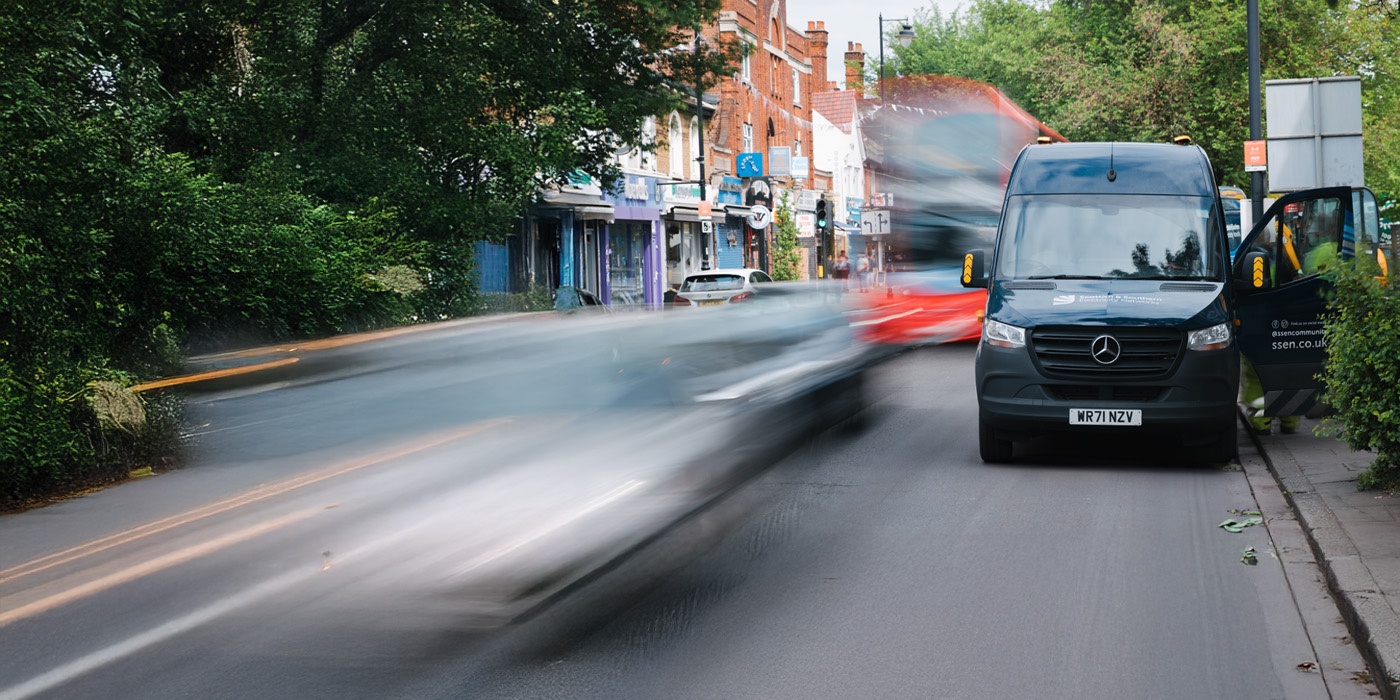At SSEN Distribution, we deliver electricity to almost 4 million homes and businesses across central southern England and the north of Scotland.
Our network runs through both some of the UK’s most remote and urban areas, covering a total of 75,000km². It has a vital role in connecting communities and supporting the transition to a cleaner, greener future.

How we’re run and regulated
We operate in what’s described as a monopoly environment. This means we’re the sole provider of the main electricity distribution network in central southern England and the North of Scotland. Our activities are closely regulated, to ensure that we deliver the best-possible value for our customers.
That’s where Ofgem comes in. Ofgem sets clear limits on how much Distribution Network Operators (DNOs) like SSEN Distribution can charge customers for running and maintaining the network, and enabling customers to connect. Ofgem also sets incentives, to ensure that we’re delivering excellent customer service.
Ofgem’s role is to protect customers both right now, and also in the future. It also sets the thresholds for success, ensuring DNOs can prepare their networks for a decarbonised future, with unprecedented levels of electricity demand as electrification accelerates.
Price Controls
Ofgem agrees ‘regulatory contracts’ for DNOs in five-year periods – these are known as price controls. We’re currently in the ED2 price control, which is running from 2023 – 2028.
We’re already planning for the ED3 price control, which will run from 2028 to 2033.
For each price control, DNOs put forward a Business Plan, which sets out their overarching strategy and plan for the period, as well as defining targets, outputs, activities and estimated costs that’ll be incurred. Ofgem uses the Business Plan to determine a DNO’s allowances for the period, which is ultimately recovered through the standing charges, which are set by Ofgem and levied on customers’ energy bills via their supplier.
The development of our Business Plan is a key moment for us to review our overarching strategy to make sure it's right for the future, that we are anticipating and meeting our customers’ future needs, and playing our part to deliver an affordable and fair transition to a decarbonised energy system and society.
Our business plans
-
Our ED2 Business Plan
We published our ambitious final Business Plan for 2023-2028 in December 2021.
-
Learn about ED3 and our forthcoming plan
As we surge towards a more electrified future, we’re preparing our roadmap through ED3 - the five‑year framework that sets out how we’ll invest, strengthen resilience and empower local communities.
Our Current Strategy

Our Purpose is to power communities to thrive today and create a net zero tomorrow. This has never been more critical as we not only keep the lights on for our communities through storms and floods, but also more and more people need connections, drive EVs, and install heat pumps, so the demand for clean electricity is increasing massively.
Our Vision is that we can power change with every connection. Changing today with network improvements and changing tomorrow as we build a network for net zero and new connections. Connections to that network, but also connections through partnerships, with our customers, our communities and stakeholders. All of us have a key role in making this happen, while making sure we all get home safe and protect our environment.
Supporting strategies
Our strategy does not stand or operate alone- we have numerous supporting or functional strategies that set out what we aim to achieve and how we plan to do that in much more detailed plans. These strategies and plans are reviewed and refreshed on a regular basis ensuring that we keep our customers and stakeholders updated on our plans as well as our progress towards our goals.
-
Climate resilience strategy
-
DSO Action Plan Year 2
-
Consumer Vulnerability Strategy
-
Digital Strategy
-
Sustainability Strategy
-
Network Visibility Strategy
-
Innovation Strategy
-
SSEN Distribution Losses Strategy
-
Stakeholder Engagement Strategy
